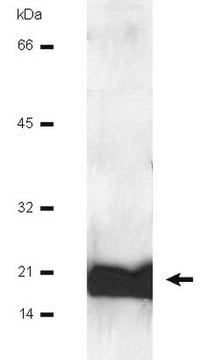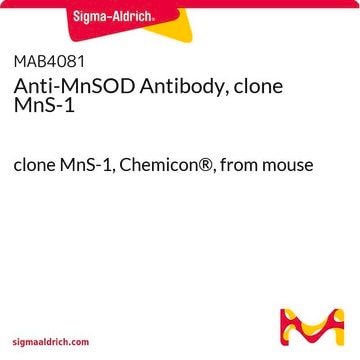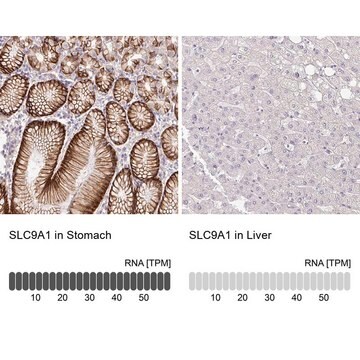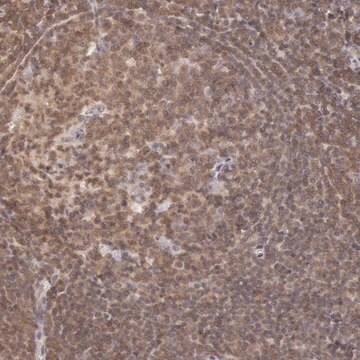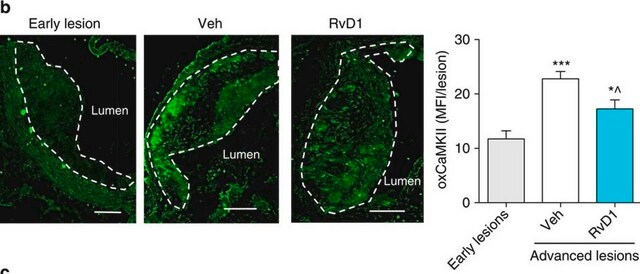MABN845
Anti-Neurophysin 2/NP-AVP Antibody, clone PS 41
clone PS 41, from mouse
Synonym(s):
Vasopressin-neurophysin 2-copeptin, AVP-NPII, Arg-vasopressin, Arginine-vasopressin, Neurophysin 2, Neurophysin-I, Copeptin, Neurophysin 2/NP-AVP
About This Item
Recommended Products
biological source
mouse
Quality Level
antibody form
purified immunoglobulin
antibody product type
primary antibodies
clone
PS 41, monoclonal
species reactivity
rat
technique(s)
ELISA: suitable
electron microscopy: suitable
immunohistochemistry: suitable
immunoprecipitation (IP): suitable
radioimmunoassay: suitable
western blot: suitable
isotype
IgG2bκ
NCBI accession no.
UniProt accession no.
shipped in
wet ice
target post-translational modification
unmodified
Gene Information
rat ... Avp(24221)
General description
Specificity
Immunogen
application
Immunohistochemistry Analysis: A representative lot detected Neurophysin 2/NP-AVP immunoreactivity in the hypothalamus of developing rats as early as embryonic day (E16) using coronal vibratome sections. (Witnall, M.H., et al.(1985). J Neurosci. 5(1):98-109).
Radioimmunoassay Analysis: Target reactivity of a representative lot was confirmed by RIA using plates coated with purified rat Neurophysin/NP and 125I-labelled secondary antibody (Ben-Barak, Y., et al. (1985). J Neurosci. 5(1):81-97).
Electron Microscopy Analysis: A representative lot immunostained granulated neurosecretory vesicles (NSVs) in all axons, Herring bodies, and terminals by EM using rat posterior pituitary LR White sections (Ben-Barak, Y., et al. (1985). J Neurosci. 5(1):81-97).
Immunoprecipitation Analysis: A representative lot immunoprecipitated radiolabelled neurophysin 2, but not neurophysin 1 (Ben-Barak, Y., et al. (1985). J Neurosci. 5(1):81-97).
ELISA Analysis: A representative lot detected neurophysin 2 immunoreactivity in rat neurophysin preparations by non-sandwich ELISA using either 125I-labelled or HRP-conjugated secondary antibody (Ben-Barak, Y., et al. (1985). J Neurosci. 5(1):81-97).
Neuroscience
Developmental Neuroscience
Quality
Western Blotting Analysis: 0.5 µg/mL of this antibody detected Neurophysin 2/NP-AVP in 10 µg of rat pituitary tissue lysate.
Target description
Physical form
Storage and Stability
Other Notes
Disclaimer
Not finding the right product?
Try our Product Selector Tool.
Storage Class
12 - Non Combustible Liquids
wgk_germany
WGK 1
flash_point_f
Not applicable
flash_point_c
Not applicable
Certificates of Analysis (COA)
Search for Certificates of Analysis (COA) by entering the products Lot/Batch Number. Lot and Batch Numbers can be found on a product’s label following the words ‘Lot’ or ‘Batch’.
Already Own This Product?
Find documentation for the products that you have recently purchased in the Document Library.
Our team of scientists has experience in all areas of research including Life Science, Material Science, Chemical Synthesis, Chromatography, Analytical and many others.
Contact Technical Service